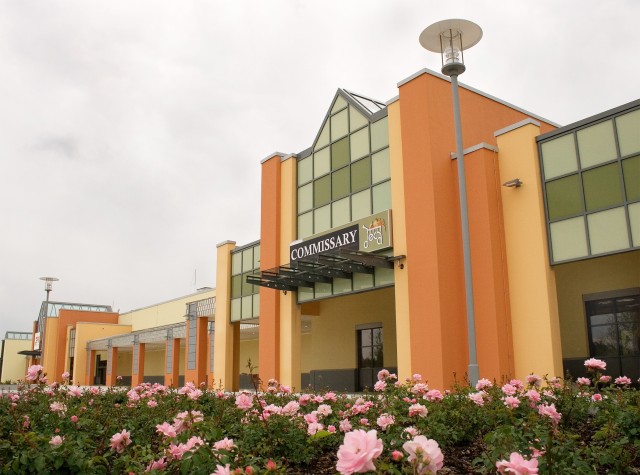
WIESBADEN, Germany -- In today's economy, investing in sustainable design is a smart construction strategy.
According to a 2008 U.S. Green Building Council report, green buildings can save millions in annual operational costs, generate new jobs and reduce greenhouse gas production.
The U.S. Army Corps of Engineers has championed this effort by creating a policy in January 2008 to implement Leadership in Energy and Environmental Design, or LEED, in Army military construction projects.
But designing and constructing certified "green" facilities in Europe is a challenge for USACE Europe District project and program managers, who are held to the German government's construction process under ABG 75, said Rich Gifaldi, sustainable engineering manager for the Europe District.
"We have special circumstances here in Germany," said Rich Gifaldi, sustainable engineering manager for the Europe District. "Although the German standards of design are very advanced in terms of sustainability, the documentation required by the USGBC to attain LEED certification is going to need some coordination between us and the German Construction Agencies."
Not only are German contractors unfamiliar with LEED, there are fewer than 70 LEED-accredited professionals among them in all of Germany, Gifaldi said.
This unfamiliarity has created a challenge, said Brian Ballweg, Europe District's LEED Accredited Professional. So he, Gifaldi and Eric Garcia, the district's sustainability design and development lead, formed a team to educate district employees and contractors on how to satisfy LEED requirements during design and construction.
The team is sharing their knowledge at official meetings and at unofficial brown bag luncheons around the district. The next big meeting will be a District-hosted LEED workshop November 17-19 at the NATO School in Oberammergau, Germany, where participants will be introduced to the LEED rating system and learn about the entire certification process.
"There are going to be some extra steps in the process to ensure our projects are meeting the Army's requirements," Ballweg said. "This is an evolving process and it's important that the German contractor and District's resident engineer are on the same page."
The biggest challenge, Gifaldi said, is incorporating the process of documenting LEED points into the German design and construction process, which is determined by ABG 75, an agreement between the U.S. and German governments.
To garner a LEED certification, points are awarded according to a 100-point scale that recognizes a building's future lifecycle performance in key areas such as water efficiency, energy consumption and carbon emissions reduction, according to the USGBC Web site.
Currently, the District has 64 projects on the books aiming for a LEED certification through fiscal year 2013, including an auto skills center at the Wiesbaden Army Airfield aiming for LEED silver certification.
"Project Development team members need to know what LEED is and the reason it's so important," Gifaldi said. "This is a real requirement by both the Army and the U.S. government and the policies are in place, but we need them to help us determine the best way to implement these requirements into our system. In the end, the goal is to construct a sustainable structure."

Social Sharing